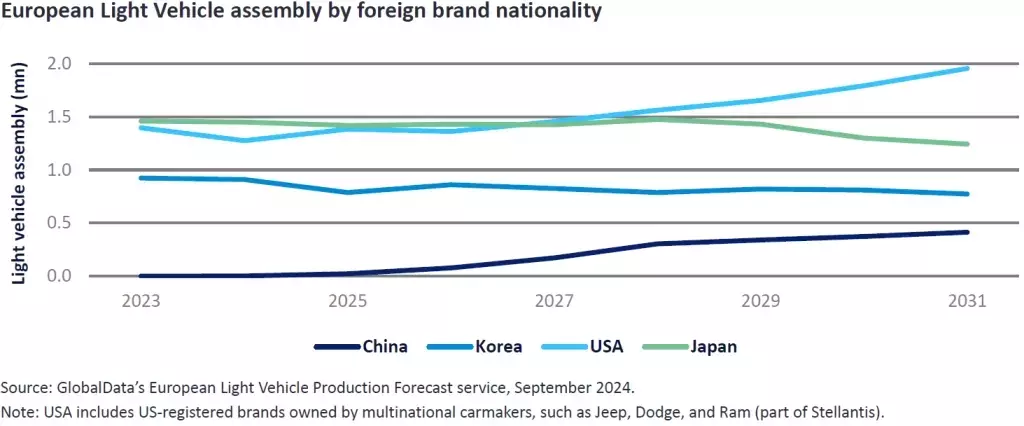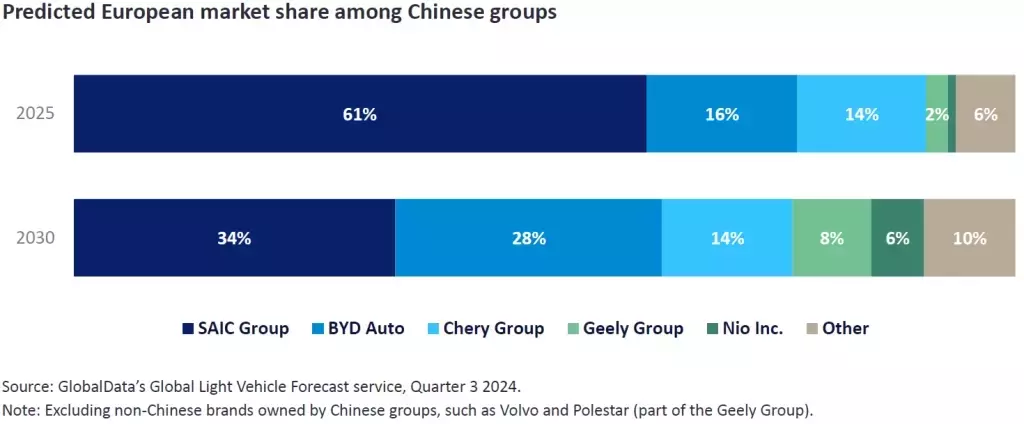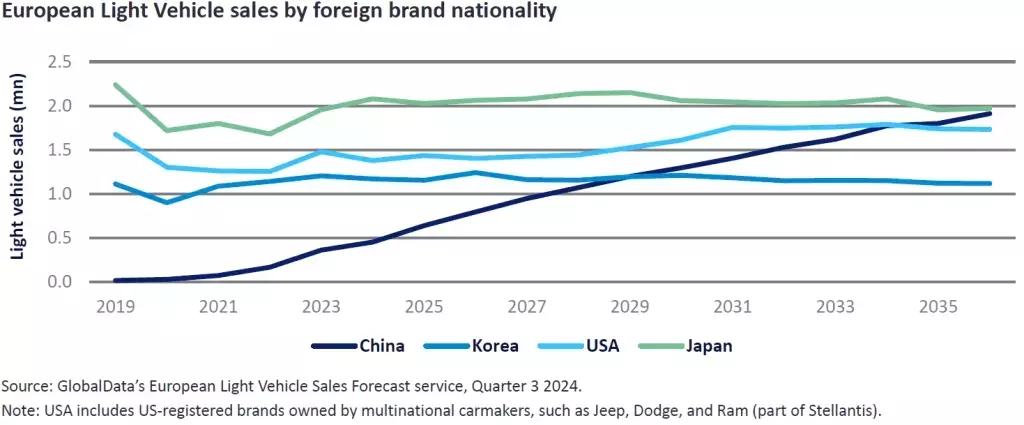The 2024 Paris Motor Show marked a pivotal moment in the global automotive industry, as Chinese automakers commanded the spotlight, showcasing their technological prowess and ambitious plans to conquer the European market. This remarkable shift underscores the rapidly evolving dynamics within the sector, with Chinese brands poised to become key players in the affordable mobility segment and the burgeoning electric vehicle (EV) market.
Driving the Future of Mobility: Chinese Automakers' Surge in Europe
Exponential Growth and Ambitious Targets
The growth of Chinese original equipment manufacturers (OEMs) in the European market has been nothing short of remarkable. Between 2019 and 2023, sales of Chinese vehicles in Europe (excluding Russia and the CIS) have skyrocketed from a mere 17,000 units to an impressive 360,000, representing a compound annual growth rate of over 110%. This expansion shows no signs of slowing down, with projections indicating that Chinese vehicle sales in Europe are likely to reach 640,000 units by 2025 and surpass 1 million by 2027-28. This remarkable trajectory is fueled by growing imports and the strategic decision by some carmakers to establish localized production facilities within the region.Captivating Designs and Cutting-Edge Technology
The success of Chinese brands like BYD and XPeng at the Paris Motor Show has not gone unnoticed. These automakers have garnered significant interest with their innovative and niche designs, catering to the evolving preferences of European consumers. BYD, in particular, has leveraged its expertise in cutting-edge battery electric vehicle (BEV) technology, coupled with a keen understanding of market demands, to become the bestselling BEV brand in the world's largest automotive market – China. This strategic focus on electrification has positioned Chinese automakers as formidable contenders in the race to dominate the European mobility landscape.Establishing a Foothold in Europe
Several Chinese automakers have made significant inroads in the European region, with most making their presence strongly felt at the Paris Motor Show. Leading the charge are brands such as Chery, BYD, and MG (owned by SAIC Group). MG, despite not being present at the event, is poised to become the largest Chinese brand in Europe this year, with an estimated 280,000 sales. The brand's strong recognition, particularly in the UK where it traces its origins, has been a key driver of its success, with both its BEV and internal combustion engine (ICE) models gaining traction.Luxury Aspirations and Premium Positioning
Alongside the large-scale Chinese manufacturers, luxury brands such as XPeng, Hongqi, and Forthing (part of the Dongfeng Group) also made a strong showing at the Paris Motor Show, signaling their desire to take on domestic European marques in the premium segment. While sales in this high-end market are expected to remain relatively low compared to the mass-market players, another luxury brand, Nio, which was absent from the event, is predicted to become the fifth-largest Chinese group in Europe by 2030.Navigating Regulatory Challenges
The rapid growth of Chinese automotive brands in Europe has not been without its challenges. The EU has recently ratified tariffs on Chinese-built BEV imports, citing concerns over the level of domestic government subsidies received by Chinese automakers. These tariffs aim to protect Europe's domestic manufacturers as they embark on their own energy transitions. However, Chinese automakers are adapting to this new regulatory landscape by increasingly looking to onshore production in Europe, both to capitalize on the growing demand for BEVs and to mitigate the impact of the EU tariffs.Localizing Production and Forging Partnerships
Chinese automakers are actively pursuing localized production in Europe, establishing new car plants or forming strategic partnerships with existing European manufacturers. This approach allows them to take advantage of local supply chains, respond to domestic demand more effectively, and potentially bypass the newly imposed tariffs, provided their vehicles meet minimum local content requirements. Leapmotor, for instance, became the first Chinese company to localize vehicle production in the EU, with a joint venture assembly operation at a Stellantis plant in Poland. Chery and BYD have also announced plans to establish their own production facilities in Spain and Hungary/Turkey, respectively, further solidifying their commitment to the European market.Reshaping the European Automotive Landscape
The market share of Chinese brands in Europe has grown rapidly in recent years, rising from a mere 0.1% in 2019 to an estimated 3% in 2024. These automakers are not only targeting consumers with affordable BEVs but are also strategically positioning themselves to become key players in the European automotive industry, outpacing competitors in core markets by focusing heavily on electrification. By 2028, we expect Chinese vehicle assembly in Europe (excluding Russia and the CIS) to reach 300,000 units annually, representing about 2% of total light vehicle production in the region.As Chinese automakers continue to expand their presence and influence in the European market, they are poised to overtake South Korean carmakers within the next five years and surpass US brands by 2035. Moreover, China is on track to challenge Japan as the largest foreign car manufacturer in Europe in terms of sales by the late 2030s. This remarkable shift in the global automotive landscape underscores the growing importance of Chinese brands in shaping the future of mobility in Europe and beyond.






